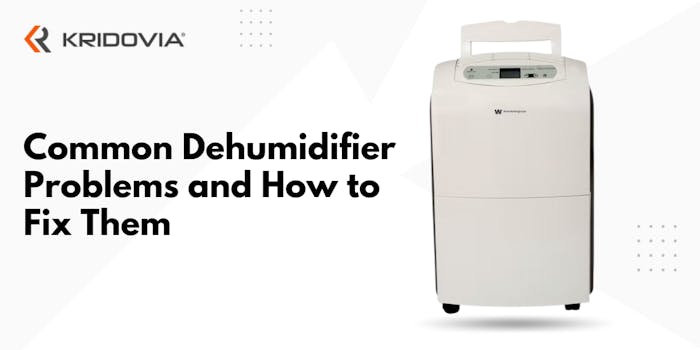Frequently Asked Questions
1. How do you troubleshoot a dehumidifier?
- Check the electricity.
- Check the power line after unplugging the dehumidifier. Replace the appliance's power cord if necessary.
- Look for ice after removing the cover panel. If there are any parts that have ice blocking them, let the ice melt before using the appliance until the room temperature is higher than 65 degrees Fahrenheit. Many users discover that the issue can be resolved by unplugging the appliance and waiting until roughly 30 days into the season.
2. How do you fix a clogged dehumidifier?
You'll need to remove the dehumidifier and clear the dirt from the coils in order to unclog them. Depending on how your dehumidifier is made, doing this can be easy or complicated. Sometimes blowing the coils clean with compressed air or dust-off is helpful.
3. How can I make my dehumidifier work better?
- Choose the humidity level.
- Decide where to put it.
- Keep all windows and doors locked.
- Often empty the tank.
- Keep it tidy.
4. Why is my dehumidifier running but not lowering humidity?
Ensure that all of the windows and doors are shut. Ensure that the dehumidifier has adequate airflow and that nothing, including drapes, blinds, or furniture, is blocking its front or rear. Install the dehumidifier away from the dryer's moisture-laden air if it is being utilised in a laundry room.
4. How do you fix a dehumidifier that will not collect water?
Your dehumidifier is not working properly if it is not collecting water: Attempt to reset the dehumidifier by unplugging it for 30 seconds, then plugging it back in. After that, adjust the unit's controls to see if it works properly.
5. What temperature is best for a dehumidifier?
Temperatures at Which a Dehumidifier Should Operate. For typical refrigerant dehumidifiers, 60 to 85 degrees Fahrenheit and 60% to 80% relative humidity are the recommended operating ranges.
6. How often do you need to empty a dehumidifier?
Depending on the conditions, you may need to empty your dehumidifier bucket at times ranging from once every two days to twice a day.
7. At what temperature do dehumidifiers stop working?
Since the moisture removed from the indoor air can freeze when it condenses on the cooling coils, most dehumidifiers should not be used in temperatures below 60° F.
8. Can a dehumidifier overheat?
By eliminating moisture from the air, dehumidifiers are a practical and affordable way to improve indoor air quality in the house. Nevertheless, failure, overheating, and fires can be brought on by incorrect use, poor maintenance, manufacturing flaws, and design flaws.






